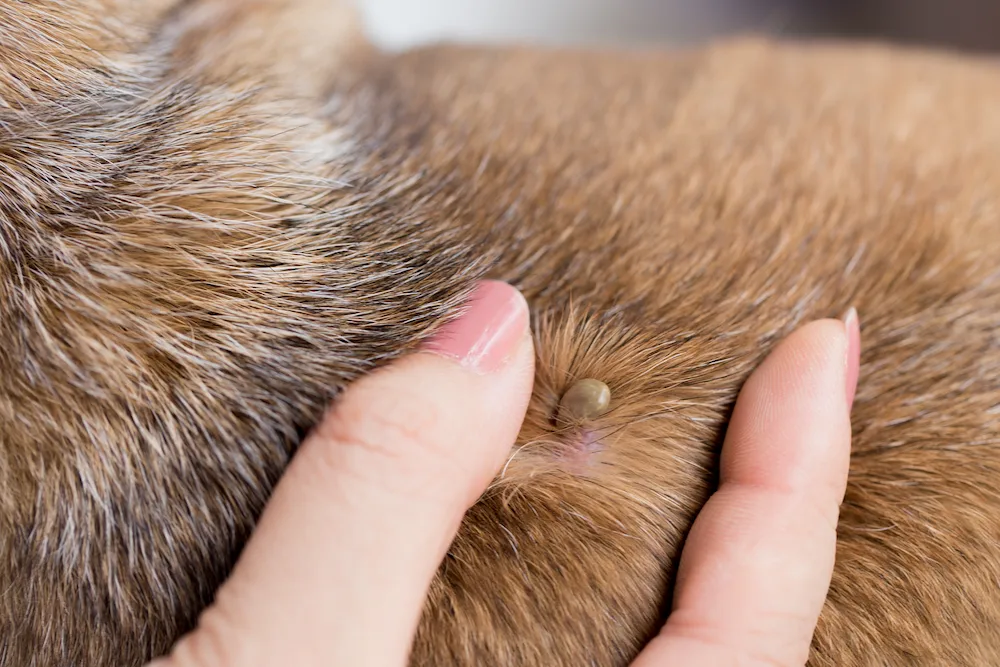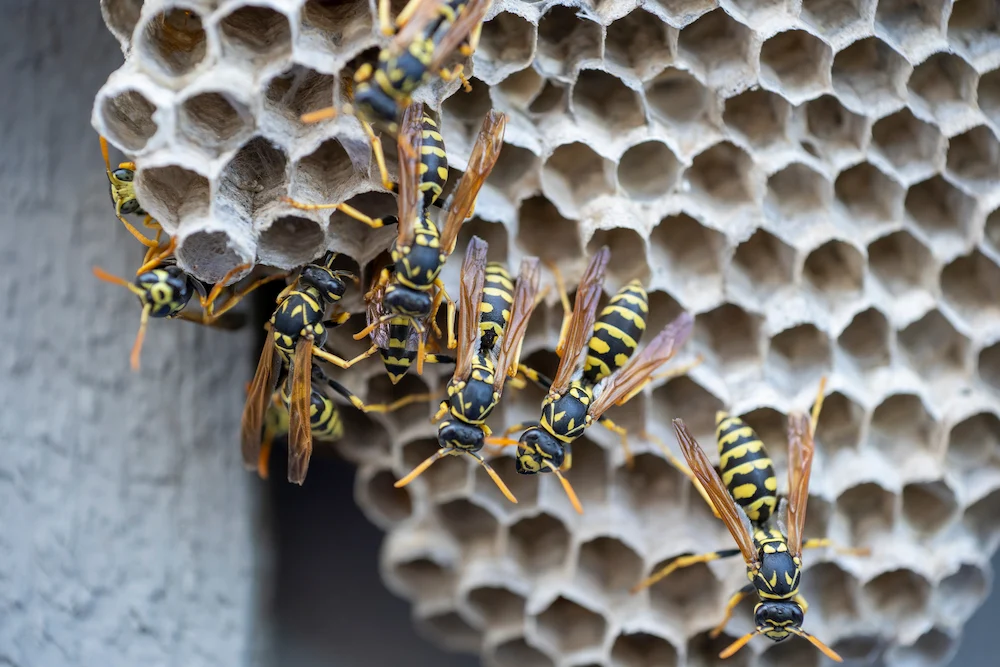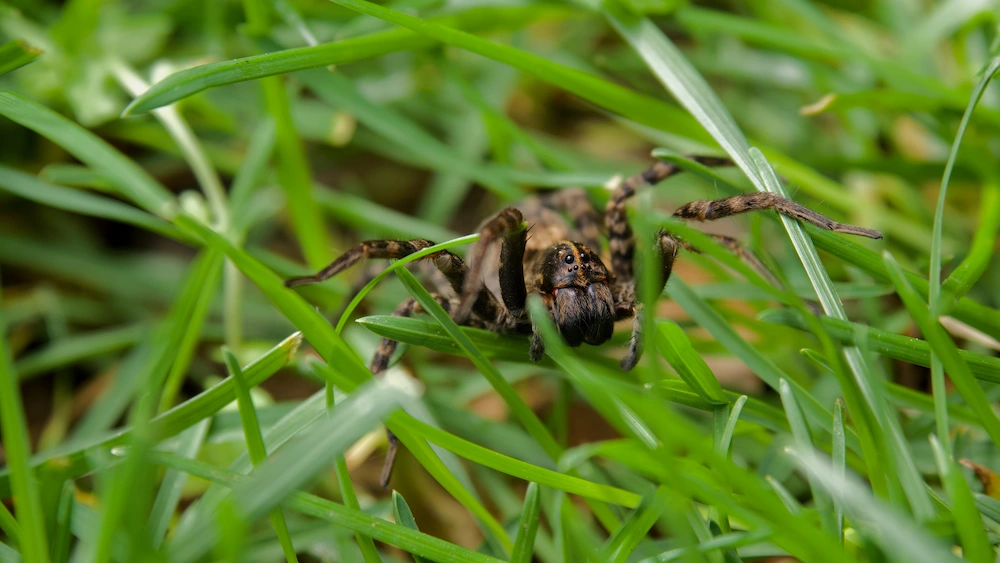Summary: Dog owners should stay vigilant against pests, and this blog breaks down the harmful habits of 5 notorious dog pests. It also gives 12 easy ways to protect pets from these pests and focuses on having a prevention plan with the vet. Romney Pest Control protects families and pets from invasive pests.
Since August is National Dog Month, we’re ready to spend this month in full celebration of our furry friends. There are a lot of responsibilities that come with being a pet owner. From making sure they have enough food and water to taking them to the vet for regular check-ups, the rewards for being an attentive pet parent are our dogs’ incomparable love and devotion.
If you’ve owned a dog or two in your lifetime, you’re probably familiar with the top canine health risks. Ear infections, gum diseases, and gastrointestinal issues are the main focuses, but we want to focus on another threat to our dogs’ health: pests.
Let’s learn about the main health concerns that stem from 5 infamous canine pests, then discover the best preventative methods to protect your pooch!
Fleas

Since fleas thrive in mild climates, they have no problem being active year-round in Texas. They’re tough to manage because fleas are always moving and reproducing once they’re on a host. Fleas lay up to 50 eggs a day and feed in clusters, so the fleas and flea dirt (droppings) are easier to see on a dog and its bedding in a major infestation.
In addition to itchy bites and potential allergic reactions, fleas are also a leading carrier of tapeworms. If a dog ingests a flea that has tapeworm larvae, the larvae will develop in the canine’s small intestines and the adults will feed on the nutrients. Tapeworms are usually found when segments of their bodies pass through the pet’s feces.
If you see any tapeworms in your pet’s business, take your dog to the vet immediately.
Mosquitoes

We don’t often think of mosquitoes as a threat to our pets, but these bloodsuckers carry the most worrisome dog health risk. If the mosquito bites a mammal with heartworms, that larvae will develop in the mosquito’s gut until it’s transmitted to the next animal through the mosquito’s saliva. Mosquitoes bite animals on their less-furry areas, like the head, belly, and legs.
Heartworms mature and reproduce inside the pet’s heart and lungs. As adults, the parasites can be 3 to 14 inches long and look like stringy pasta. The long strands slowly damage the dog’s organs, which can be fatal. Heartworm treatment is risky and isn’t always effective, so it’s best to prevent them at all costs (more on this later).
Common heartworm symptoms include lung damage, coughing, fatigue, weight loss, and a swollen belly. Take your dog to the vet at the first signs of heartworm activity.
Ticks

The tick is trickier to catch before it starts feeding since it’s a solitary pest. It waits in thick brush or tall grass for a host to get close enough for the tick to crawl onto (or “quest”) the mammal. Ticks stay attached for 3 to 10 days, depending on the species and life stage. Young ticks need to feed between each molt to have energy for the next one.
The true risk with a tick is that if it fed on an infected host, it could then transmit the pathogens to its next host through its saliva. Ticks need to stay attached for at least 24 hours to transmit a tick-borne disease. The species we see in Texas include American dog ticks (usually in grass), brown dog ticks (usually near dogs), and Lone Star ticks (the most aggressive).
Ticks hide when they feed on animals, so they tend to stay near the head, ears, neck, and feet. Common tick-borne diseases that affect dogs are Lyme disease, Rocky Mountain spotted fever, anaplasmosis, and canine ehrlichiosis. If you find a tick on your pet, remove it ASAP.
Stinging Insects

Moving on to a non-bloodsucking pest. Stinging insects, like wasps and yellow jackets, are notoriously territorial. Most of them (besides honeybees) can sting multiple times when they feel threatened, so it’s best to avoid disturbing them at all costs. Of course, it’s hard to give our pets that memo when they can’t fully understand what we’re saying.
If your dog snaps its mouth at a wasp out of annoyance, they might inadvertently cause the pest to sound the alarm via pheromones (scent chemicals). Another way your pet can draw the attention of stingers is by disturbing their nests. Yellow jackets and bumblebees nest in the ground, so it’s easy for an animal to accidentally step on their habitat.
We know how painful stings are, and it’s no different for animals. Dogs can even get stung in the mouth (for the aforementioned snapping), causing it to swell up. Stings are more concerning if your pet is allergic to the venom. If your dog is stung, take them to the vet for immediate treatment.
Spiders

It might seem like a mistake to feature spiders on a list of pet pests, but spider bites are more common than you think. Spiders prefer to stay hidden at all times, unless they’re hunting or waiting on their webs. This leads them to hide in grass, plants, pet beds, blankets, furniture, and doghouses. When they’re touched or feel threatened, many spiders will bite.
Non-venomous species aren’t cause for much concern since their bites are just itchy (still, keep an eye on the bite while it heals). Black widows and brown recluses, the 2 most venomous U.S. species, are a different story. They’re both common in Texas, so it’s not uncommon for animals to accidentally disturb these angry arachnids.
The venom causes issues in the neuromuscular system, and the clear symptoms include swelling, redness, limping, cramping, and vomiting. If your canine shows these signs, take them to (you guessed it!) the vet immediately.
Preventing Pests & Protecting Your Pet

We understand how scary it is to read about all of these infamous pests and the health risks they pose. Pet health is invaluable, especially when your dog is considered a member of the family. That’s why we’re ending this post on a positive note by listing all of the efficient ways to protect your dog, family, and home from these frustrating pests!
Our top prevention (and protection) tips are:
- Talk to Your Vet — If you don’t already have a preventative plan for your pet, you need to consult your vet. At the very least, your pet should have heartworm prevention and flea & tick prevention. Your vet will be able to give you the best recommendations based on your dog’s health history.
- Use Heartworm Prevention — Speaking of which, we cannot recommend heartworm prevention enough. Since the methods are incredibly easy (monthly chewable, annual shot, etc.) and heartworm disease is serious and potentially fatal, prevention is 100% worth it.
- Check Your Dog Daily — Pest issues are always easier to solve when they’re caught early, especially when they affect your dog’s health. Check your pet daily for fleas and ticks by running your fingers through their fur, paying close attention to the neck, ears, and toes.
- Remove Ticks Immediately — In the event that you do find a tick, it needs to be removed ASAP (ideally within 24 hours). There are plenty of online tutorials on how to remove it with fine-point tweezers, or you can take your dog to the vet if DIY removal isn’t safe.
- Inspect Your Pet’s Bedding — Fleas, ticks, and spiders can hide near a pet’s sleeping area, so it’s also important to check their hangout spots. Inspect their blankets, bed, and/or usual spot on the carpet for any hidden pests. If possible, wash their bedding regularly.
- Maintain the Yard — By keeping the yard trimmed, you effectively eliminate easy hiding spots for these pests. Mow the lawn and prune the plants regularly. Plants and tree limbs should be cut back at least one foot from the house to make it harder for pests to invade.
- Remove Stagnant Water — Mosquitoes need just half an inch for their eggs, so it’s best to remove all sources of stagnant water from your yard. After it rains or the sprinklers run, empty out items that collected water. Also, change the water in your dog’s water bowl daily.
- Deter Wildlife from the Yard — Wildlife (deer, raccoons, opossum, etc.) often bring pests of their own. Fleas and ticks run amok in areas with a lot of wildlife. Discourage them from invading your yard by ensuring your fence is secure and removing food and water sources.
- Store Pet Food Properly — Speaking of food, it’s also important to store your pet’s food properly. Rodents, flies, and ants love dry pet food! Use a clean, lidded garbage can or a large airtight container to store your dog’s food.
- Keep an Eye on Your Dog — You likely do this without thinking about it, but it’s important enough to mention it here. Look out for signs that your dog isn’t feeling well and take them to the vet ASAP if they’re not getting better. Common signs of a pest-borne illness are loss of appetite, lethargy, constant scratching, restlessness, and vomiting.
- Clean the Floors Often — Since dogs spend all of their time at ground-level, it’s a good idea to keep those floors clean. Vacuum or mop your indoor flooring often, especially if your pet is inside a lot. Use a hose or power washer to clean your back patio or deck when it starts looking dirty.
- Utilize Pest Control — Flea collars and preventative medications are great, but they can’t solve every pest problem. When you combine your dog’s preventative treatments with professional pest control, you cover all of your pest-preventing bases.
Protect Your Home with Romney’s Pet-Friendly Services!
Romney Pest Control’s services are reliable at protecting not only your pets, but also your family and home. Our highly-trained technicians provide advanced pest control techniques that eliminate pests quickly.
The secret to solving these types of pest problems is to eliminate every life stage, from eggs to adults. Leave the stress of pest control to the experts. Contact us today for a free quote on our services and to learn more about our bloodsucking pest prevention!
Citations
Diener, M. (DVM). 7 common bug bites on dogs. PetMD. Available at https://www.petmd.com/dog/general-health/7-common-bug-bites-dogs (Accessed on July 18, 2025).
Signs of heartworm disease in dogs. (n.d.). Heartgard Plus. Retrieved July 18, 2025, from https://heartgard.com/signs-of-heartworms-in-dogs
Stregowski, J. (2025, May 28). Bugs on dogs: Common parasites found inside your canine companion. The Spruce Pets. Available at https://www.thesprucepets.com/common-dog-parasites-1117427 (Accessed on July 18, 2025).
What are the symptoms of a spider bite on a dog?. (n.d.). Smithfield Road Veterinary Hospital, PLLC. Retrieved July 18, 2025, from https://www.knightdalevet.com/site/blog/2022/05/31/spider-bite-dog




